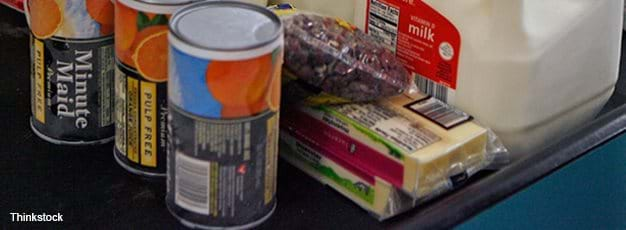WIC Foods Cost More in Smaller Stores

The Special Supplemental Nutrition Program for Women, Infants, and Children (WIC) is USDA’s third largest food assistance program. In fiscal 2013, an average of 8.7 million low-income women, infants, and children per month participated in the program, with expenditures totaling $6.4 billion. WIC participants are given vouchers, checks, or electronic benefit transfers (EBT) for specific packages of foods that can be redeemed at WIC-authorized retailers anywhere in the State the vouchers were issued. Stores are then reimbursed by the State in which they operate for the items sold to WIC participants at the prices charged for those WIC-approved foods. Containing program costs is a continual issue because WIC is funded annually by Congressional appropriations, making the program’s capacity largely dependent upon the funding level and costs per participant. In turn, costs per participant depend in part on the prices (redemption values) charged for the WIC foods. A recent study by ERS and University of California, Davis researchers found that smaller retailers in California charge higher prices than larger retailers for comparable WIC foods.
The researchers used redemption data for the California WIC program from 2009 through 2012 to study patterns in WIC redemptions and costs for WIC packages across stores. One of the most heavily redeemed WIC food packages was package 6012, which consists of a gallon of low-fat milk, a dozen eggs, a pound of cheese, and either peanut butter (16- or 18-ounce container) or a pound of dried beans, peas, or lentils. The median redemption value for this package in January 2011 was $20.05 among stores with one or two check-out registers. However, among large supermarkets with at least 10 registers, the median redemption value was $12.95.
Importantly, prices did not decrease steadily with increases in store size. Stores with three or four registers had significantly lower prices than did the smallest stores and prices dropped again for stores with five or six registers, but prices are comparable among all stores with at least five registers. The study included 18 of the most popular WIC food packages and all followed a similar pattern across store sizes, with results suggesting that food package costs are considerably higher in smaller stores.
WIC participants have some flexibility in their choice of brands or package sizes when redeeming their vouchers, therefore, the differences across store sizes may be driven by both prices and product selections. However, the smallest participating stores are also responsible for a relatively small share of total WIC redemptions. During 2009-12, stores with 1 or 2 registers accounted for less than 11 percent of the total value of all WIC redemptions in California and those with 3 or 4 registers accounted for less than 5 percent, while stores with 10 or more registers accounted for 31 percent, hence potential savings from restricting WIC redemptions to larger stores are limited.
Cost Containment in the WIC Program: Vendor Peer Groups and Reimbursement Rates, by Tina L. Saitone, Richard J. Sexton, and Richard Volpe, USDA, Economic Research Service, August 2014


